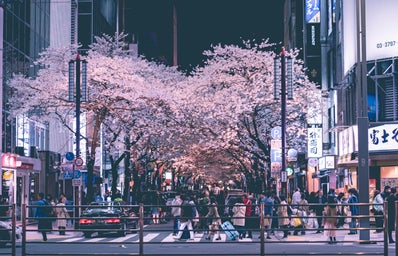If you’re an anime fan, you’re probably already aware that this phenomenon is not a new thing. Before, people would make fun of kids for watching anime, wearing anime-themed merch or even for cosplaying their favorite characters. Now, almost everyone has watched an anime or two at some point in their lives. The question is, since when has anime gained so much popularity? Is it just a fad or does it actually inspire a cultural impact as well as an economic one? Has anime influenced society?
For starters, we must understand that cartoons and anime are not the same. Traditional cartoons are designs and drawings aimed at children that are sometimes presented in an animated form. Anime (アニメ, coming from the word “animation”) is the animated media from Japan, characterized by its peculiar colorful graphics style. It comes in many ways, including as TV shows or movies for kids, as well as for adults. We can further categorize anime into traditional entertainment genres, such as romance, horror or science-fiction. However, anime also has a variety of unique genres. Anime genres can be described in a myriad classifications, like shonen (for “young boys”), shoujo (for “young girls”), isekai (escapism), slice of life (everyday life), kodomomuke (kid’s stuff), etc. More often than not, anime are based on manga, Japanese graphic novels, or comic books (if they reach enough popularity). Without a doubt, anime is one of the best ways to represent Japanese culture. However, it wasn’t always this way.
History
Anime has been around since the early 20th century when the manga Astro Boy ( originally released in 1954) by Osamu Tezukaーaka the “Father of Manga”ーearned a lot of interest and was adapted into its own anime. But it was the 1988 film Akira (adapted from its own manga) that popularized what we know today as anime. Katsuhiro Otomo’s science-fiction movie pushed boundaries that US cartoons at the time were not doing, as Susan Napier explained in a CNN-conducted phone interview. After that, both the late 80s and the early 90s brought about the “anime boom” with animes such as Dragonball, Sailor Moon and Slam Dunk. In the late 90s, the video game Pokémon created a global sensation, selling more than 31 million copies of Pokemon Red/Green/Blue (1996); which paved the way for an animated spin-off that was aired for more than 100 countries. Within its growing popularity, other countries were inspired by the anime art style to the point of creating series that use similar animation techniques or aesthetics such as Avatar: The Last Airbender and RWBY.
Economy
Economically speaking, anime has become a billion-dollar industry. The Associations of Japanese Animations (AJA) reported a sales record of $19.1 billion in 2017. Even with the sales losses caused by COVID-19, Demon Slayer the Movie: Mugen Train set a new record by becoming the highest-grossing film in Japanese box-office history, earning more than ¥40 billion (more than $450 million worldwide). Other movies that broke the record were Spirited Away (2001), with more than $274 million, and Your Name (2016), with over $357 million. Anime has also promoted tourism in Japan since it attracts a lot of fans worldwide by showcasing their culture; including foods, songs, traditions, clothes, the language and their beautiful country.
Why has anime become more popular than ever?
Nowadays, social media plays a huge role in the anime industry. This outlet has helped anime gain a lot of popularity thanks to the edits and fanarts that fans upload to social media platforms such as Instagram, TikTok, and Twitter. It’s not a surprise that fandoms have taken over the anime industry. After all, it is well-known that anime provides a multitude of series that pleases a variety of audiences. As mentioned earlier, its unique genres allow anime to delve into deep themes that are not suitable for kids (another difference from cartoons); however, there are some light-hearted anime created for children. While social media and fans are promoting it, there’s new accessibility that wasn’t possible until now. Before, there was “Anime only” streaming services (e.g. Crunchyroll and Funimation), but streaming services, such as Netflix and Hulu, are now bringing anime to a wider audience.
Anime was thrown under the rug for many years. There was a lot of judgement, perhaps because people associated the word anime with animation (which is not wrong) and, therefore, with kids (which is incorrect). Anime is not Disney or Pixar. In fact, some anime have dark themes that should not be watched by kids, which is why parents should monitor the classification ratings of the anime series their young child is watching.
Anime can become your new hobby. As someone who spent their entire senior year binge-watching every single anime I could find, I assure you that they’re really goodーyes, there’s a genre for everyone. Some have made me cry for days (yes, I am talking about Your lie in April, still not over it) while others made me laugh so hard that my stomach ached. Here’s a list of my favorite animes: Hunter x Hunter, Your Name, Assassination Classroom, The Disastrous Life of Saiki K, Haikyuu, Given, Yuriii on Ice!, My Hero Academia, Attack on Titan… Ok, you get it. Anime is fun and a great conversation starter. That was one of the main reasons I became friends with my bestie. So, give it a try; there’s a reason why things are popular!


